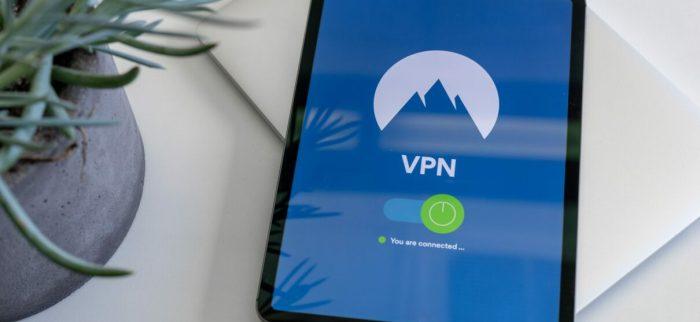Accessing the internet through public Wi-Fi can be convenient, but it also exposes users to various security risks. Having experienced the pitfalls of unprotected networks, I turned to Virtual Private Networks (VPNs) as a crucial tool for maintaining my online safety. Here, I will share how I utilize VPNs for secure access while using public Wi-Fi, alongside some practical tips to keep your information safe.

Understanding the Risks of Public Wi-Fi
Public Wi-Fi networks are notoriously insecure. When I connect my device to a network at a coffee shop, airport, or hotel, I’m sharing that connection with numerous other users. Unfortunately, many people do not take the necessary precautions to secure their data. This environment creates a breeding ground for cybercriminals. They can easily intercept data transmissions, access sensitive information, and even inject malware.
Common threats I have encountered on public Wi-Fi include:
- Man-in-the-Middle Attacks: Attackers can intercept communications between my device and the server.
- Packet Sniffing: Cybercriminals can capture unencrypted data packets traveling over the network.
- Rogue Hotspots: Impersonators might create a Wi-Fi hotspot that looks legitimate, tricking users into connecting.
For these reasons, I have made a VPN a non-negotiable component of my online privacy strategy.
What is a VPN?
A VPN creates a secure and encrypted tunnel between my device and the internet. This protocol hides my IP address and encrypts my data, which makes it exceptionally challenging for cybercriminals to snoop on my activities. With a reliable VPN, even if someone were to intercept my connection, they would only see randomized data instead of legible information.
Choosing the Right VPN
I have tried several VPN services, and the choice of the right one is crucial. When selecting a VPN, I look for the following features:
- Encryption Standards: A strong AES-256 encryption is a must.
- No-Log Policy: I prefer a provider that does not keep logs of my online activities.
- Speed and Performance: I avoid services that dramatically slow down my internet connection.
- Multiple Server Locations: A wide range of servers allows me to bypass geo-restrictions.
- User-Friendly Interface: I’m more likely to use a VPN that has a simple and intuitive application.
How I Use VPNs at Public Wi-Fi Locations
Whenever I connect to a public Wi-Fi network, I take specific actions to ensure my data remains secure.
-
Activate the VPN Before Connecting: Before I even log into the public Wi-Fi, I start my VPN application. This practice ensures that my data is encrypted from the moment I access the network.
-
Connect to a Nearby Server: I usually connect to the nearest server for the best performance. Some VPNs have built-in features that automatically select the best server based on location and speed.
-
Keep My VPN Application Open: I keep the VPN running for the entire duration of my connection to the public network. This way, any data sent or received remains encrypted continuously.
-
Avoid Sensitive Transactions: While my VPN provides a layer of security, I still refrain from performing sensitive activities, such as online banking or shopping, over public networks. This precaution minimizes my risk further.
-
Disconnect When Not in Use: I make it a practice to disconnect my VPN when I no longer need it. Keeping unnecessary applications running can make my device more vulnerable in other ways.
-
Regularly Update the VPN: Developers regularly release updates to VPN applications to enhance security and performance. I ensure that my VPN software is always up-to-date to take advantage of these improvements.
✅ Current deal: 🔥 Get NordVPN with up to 75% OFF! 🔥
Additional Tips for Secure Public Wi-Fi Use
In addition to utilizing a VPN, I apply several habits that contribute to my overall safety on public Wi-Fi networks.
-
Forget the Network: After finishing my session, I forget the public network on my device to prevent automatic reconnections in the future.
-
Use Two-Factor Authentication: I enable two-factor authentication on every account that offers it. This adds an additional layer of protection, making it harder for unauthorized users to gain access.
-
Disable Sharing Options: I turn off features that allow file sharing, printer sharing, and remote login on my device. This limits the potential exposure of my files.
-
Use Strong, Unique Passwords: I make sure that my passwords are strong and unique for different services. Password managers have become a valuable tool for me in this regard.
-
Monitor Connected Devices: Many routers allow the owner to see what devices are connected. While this isn’t always available in public settings, I remain vigilant about potentially unknown devices accessing the network.
-
Secure My Device: I update my device’s software regularly and use built-in security features, such as firewalls and antivirus programs. This basic hygiene bolsters my security even further.
✅ Current deal: 🔥 Get NordVPN with up to 75% OFF! 🔥
Conclusion
While public Wi-Fi presents various risks, utilizing a VPN can significantly enhance my security during these sessions. By implementing the strategies and tips I described, I feel confident while browsing on public networks. Cybersecurity is not just a personal endeavor; it’s about making conscious decisions that prioritize the safety of my data. I hope you’ll find these insights helpful as you navigate the complexities of public Wi-Fi access in your life.
Affiliate Disclosure: By clicking on our links, we may earn commissions at no additional cost to you.